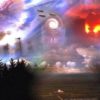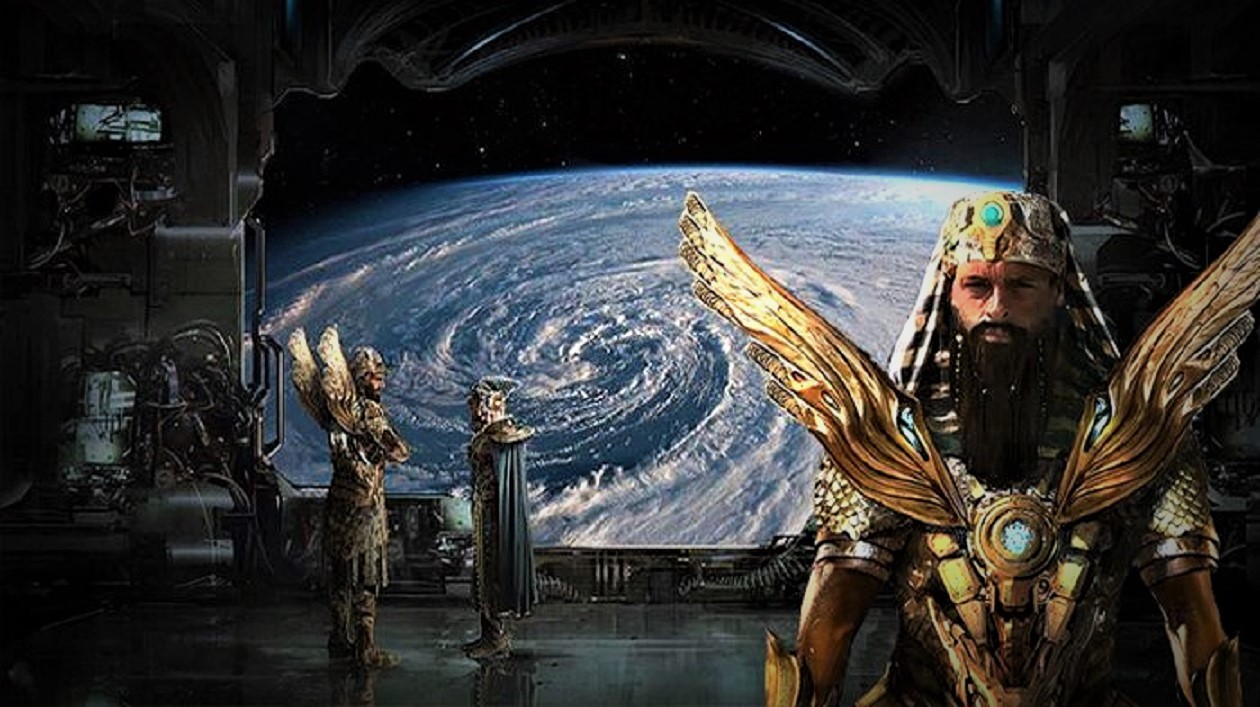In an era where doomsday predictions flood social media and news feeds, it’s easy to dismiss ancient prophecies as relics of superstition. But what if a simple Bavarian farmhand from over a century ago foresaw events that eerily mirror our modern anxieties, global conflicts, technological marvels, and cataclysmic disasters?
Sepp Wudy, a wandering laborer from the Bohemian Forest, didn’t have access to smartphones or satellite imagery, yet his visions of poisoned air, scorched landscapes, and a “celestial sign” in the sky have resurfaced in recent years, sparking debates among historians, eschatologists, and survivalists alike. Was he predicting the horrors of a Third World War, complete with nuclear devastation? Or could his warnings point to something even more unpredictable, a massive solar flare capable of resetting civilization?

Born at the turn of the 20th century in a remote corner of what was then the Austro-Hungarian Empire, Wudy lived a life far removed from the corridors of power. Yet his prophecies, scribbled in a farmer’s calendar and passed down through generations, have gained renewed attention amid rising geopolitical tensions and warnings from scientists about solar activity. Could this forgotten seer hold clues to our future?
Who Was Sepp Wudy? A Life Shrouded in Mystery and Folklore
Sepp Wudy’s story begins in the misty hills of the Bohemian Forest, a region straddling the border between Bavaria and Bohemia (now part of the Czech Republic). Little is known about his early years, but records paint him as a quintessential itinerant worker—a farmhand who moved from homestead to homestead, taking on odd jobs when harvests failed or labor was scarce. He wasn’t educated in the formal sense; there were no universities or libraries in his world. Instead, Wudy’s knowledge seemed to come from an otherworldly source, what locals called “the second sight.”
The Wandering Prophet of the Forests
Wudy’s wanderings took him across Bavaria, where he earned a reputation as both a reliable worker and a peculiar figure. Villagers whispered about his ability to reveal hidden truths—telling strangers intimate details about their lives or locating lost items through cryptic rituals. One tale, preserved in Hans Watzlik’s 1921 collection of Bohemian Forest legends, describes Wudy drawing a chalk circle, lighting a candle, and consulting a mysterious black book to recover a stolen belt. But these feats came at a cost; Wudy claimed he couldn’t confess his sins in the same year as performing such acts and had to slip out of church before holy water was sprinkled.

His prophetic gifts weren’t always welcomed. People feared him, twisting their fingers at their temples in mockery when he spoke of impending doom. Yet, as events unfolded, his words proved uncannily accurate. When drafted into the Austro-Hungarian Army during World War I, Wudy foretold his own fate: “I won’t come back, because I have to die in ice and snow.” True to his vision, he perished in the frozen Dolomites, his unit vanishing amid the Alps’ brutal winter warfare. This personal prediction lent credibility to his broader prophecies, which were recorded by his employer and later transcribed by writers like Watzlik and historian Paul Friedl.
How His Prophecies Survived the Centuries
Wudy’s visions weren’t committed to grand tomes but jotted down in a simple farmer’s calendar between 1910 and 1914. The farmer’s son shared these notes with Watzlik, who passed them to Friedl in 1944. Friedl published them in his 1974 book, “Prophezeiungen aus dem bayerisch-böhmischen Raum,” ensuring their survival. These accounts, though fragmented, form a tapestry of warnings that span wars, societal decay, and natural calamities. Unlike polished oracles from antiquity, Wudy’s words feel raw and folksy, delivered in the dialect of a man more at home with plows than prophecies.
What makes Wudy stand out among other Bavarian seers—like Matthias Stormberger or the Mühlhiasl—is his blend of the mundane and the apocalyptic. He didn’t claim divine authority; he often admitted confusion, saying, “I see even more, but I can’t understand it and can’t tell it. I’m only a farmhand and I don’t know if it’s a good or bad spirit which is showing me all these things.” This humility adds a layer of authenticity, making his visions all the more compelling in our skeptical age.
Wudy’s Predictions of Global Conflicts: From World War I to the Brink of Armageddon
Wudy’s prophecies gained traction because they accurately foreshadowed the cataclysms of the 20th century. Living in a time of relative peace, he warned of escalating wars that would reshape the world. His words, dismissed as ramblings during his lifetime, were revisited with awe as history unfolded.
Foreseeing the First World War and His Own Demise
Wudy’s earliest recorded predictions centered on the Great War. He spoke of a conflict that would engulf Europe, pulling him into its maw. “This is not the last war,” he told his employer, implying a chain of horrors to follow. His unit’s disappearance in the Alps fulfilled his grim self-prophecy, but it was just the beginning. Historians note that Wudy’s descriptions of trench warfare and alpine battles aligned with the realities soldiers faced, though he couldn’t have known them in advance.
As the war raged from 1914 to 1918, locals dusted off his notes, marveling at their prescience. But Wudy had seen further, much further.
The Shadow of the Second World War
With the ink barely dry on the Treaty of Versailles, Wudy predicted another conflagration: “Then soon there will be another, and only after that the last one comes. This last one is more terrible than the other one.” He alluded to a tyrannical leader—interpreted by some as Hitler—who would drag Germany into ruin. When the Nazis rose to power and World War II erupted, Bavarian eschatologists scrambled to reinterpret his words. Wudy described devastation far beyond the first war, with “gray birds” flying overhead, possibly foreshadowing aerial bombings and Luftwaffe raids.
Post-war, his prophecies faded into obscurity again, only to resurface in the nuclear age. But it was his vision of a third, ultimate conflict that truly chills the bone.
The Ominous Third War: Nuclear Annihilation or Something Else?
Wudy’s most haunting prediction concerns what many interpret as World War III: “One becomes more terrible than the other one.” He painted a picture of total chaos, where borders dissolve and civilization regresses. “In these times there will be no more border against Bavaria,” he said, a detail that resonates today with the European Union’s open frontiers.
Yet, his descriptions transcend conventional warfare. He warned of air that “corrodes into the skin like a poison,” hair loss, and poisoned sustenance: “You have the meal in front of you and are not allowed to eat it, because it brings you death; and you have the water and may not drink it, because it would also mean your death.” These symptoms mirror acute radiation sickness, a concept unknown in Wudy’s era, Marie Curie was still pioneering radioactivity research when he spoke.

Was this a glimpse of nuclear Armageddon? Or, as some modern analysts suggest, the aftermath of a colossal solar flare? Wudy’s era lacked the vocabulary for atomic bombs, but his words align with fallout from either source. He even timed it to an age of advanced technology: “You could see your cousin in Vienna from your room, and if you needed him quickly, he could be there in an hour.” Video calls and high-speed travel? Spot on for our smartphone-saturated world.
Visions of Catastrophe: Signs, Symptoms, and Survival
Beyond wars, Wudy’s prophecies delve into a broader apocalypse, blending natural disasters with human folly. His visions suggest a reset of society, punishing “wantonness” and godlessness.
Technological Marvels and Societal Decay
Wudy foresaw a hyper-connected future where “people will become increasingly base and godless.” He lamented generations growing worse, with “dance music” in churches and priests joining in—a critique of secularism that echoes today’s debates over faith and culture. Then, amid the revelry, a turning point: “Outside there will be the celestial sign, which announces the beginning of great mischief. There will be a brightness in the north, like never seen before, and then the fire will rise up all around.”
This “brightness in the north” could be auroras amplified by a solar storm, or the flash of nuclear detonations. Either way, it heralds fire engulfing the earth, scorching the Bohemian Forest “like a straw barn.”
The Horrors of Radiation and Environmental Poisoning
Wudy’s most vivid warnings describe a toxic world: “The air devours into the skin such as poison. Put on all your clothes and find a distant cave in the mountain. Sit in this hole and don’t stick out even the tip of your nose until it’s all over, it won’t be long.” He advised chewing a juniper berry for protection and avoiding milk for eight weeks, perhaps to evade contaminated dairy.
These details evoke nuclear fallout, where radioactive particles contaminate air, water, and food. But consider a solar flare: A Carrington-level event today could fry electronics, ignite wildfires via EMP-induced sparks, and increase radiation exposure from weakened magnetic fields. Wudy’s “fire everywhere” might describe global blackouts and conflagrations, while poisoned resources align with disrupted supply chains and atmospheric changes.

He added ecological omens: “When no owl cries any more and the hares come to the house and collapse, then go away from the water and don’t mow grass.” Dying wildlife signals environmental collapse, urging retreat to safe havens like the Osser mountain’s pure spring.
Practical Survival Advice from a Century Ago
Wudy wasn’t just a harbinger of doom; he offered lifelines. “Don’t run when the gray birds fly,” he cautioned, perhaps advising against fleeing amid aerial assaults or chaotic evacuations. Instead, hunker down in caves or holes. “Go to Bavaria, where blessed Mary protects the people; but there too all will be chaotic.” He urged passing these warnings to descendants: “Tell it to your children and grandchildren. They will have to face it.”
In today’s context, this translates to prepping: Stockpile non-perishables, seek high-ground shelters, and monitor solar activity via apps like NASA’s space weather alerts. Wudy’s folk remedies, like juniper berries (known for antimicrobial properties), add a rustic touch to modern survival guides.
Interpreting Wudy’s Prophecies in the 21st Century
As we grapple with climate change, geopolitical strife, and space weather threats, Wudy’s visions feel prescient. But are they literal, or symbolic?
Nuclear War vs. Solar Flare: Two Sides of the Same Coin?
Traditional readings frame Wudy’s third war as nuclear escalation, perhaps involving Russia and the West, echoing other seers like Alois Irlmaier. His radiation symptoms—skin corrosion, hair loss—match Hiroshima survivors’ accounts.
Yet, the prompt to consider a solar flare opens new interpretations. The 1859 Carrington Event caused telegraphs to spark and auroras visible in the tropics—a “brightness in the north” indeed. A modern equivalent could disable grids, leading to societal breakdown without a single bomb. NASA’s warnings of increased solar activity in 2025 align eerily with Wudy’s timeline of advanced tech preceding catastrophe.

Wudy himself hedged: “Everything will come like the Stormberger has told, but he didn’t tell everything or they didn’t understand him. Because it will be worse than bad.” Stormberger, an 18th-century predecessor, also spoke of “fire from the skies,” blurring lines between man-made and cosmic disasters.
Parallels with Modern Events and Other Prophets
Today’s headlines—Ukraine conflicts, AI advancements, pandemics—echo Wudy’s godless society and rapid tech. Compare to the Mühlhiasl, who predicted forests burning and poisoned rivers, or Irlmaier, who saw “yellow dust” (radiation?) blanketing Europe. Biblical echoes abound, from Revelation’s stars falling to Ezekiel’s northern lights.
Skeptics argue these are vague enough to fit any era, but Wudy’s specificity—video communication, hour-long travel from Vienna—defies coincidence. In a world where solar scientists predict a potential “internet apocalypse” from flares, his words urge vigilance.
The Enduring Legacy of Sepp Wudy
Sepp Wudy wasn’t a doomsayer seeking fame; he was a reluctant messenger, admitting, “I would tell you even more, but what I see I can neither understand nor express.” His prophecies remind us of humanity’s fragility, whether facing war or the sun’s wrath. As we approach what some call the “solar maximum” in 2025, perhaps it’s time to heed his call: Prepare, reflect, and pass the wisdom on.
In the end, Wudy’s visions aren’t about fear, but foresight. They challenge us to mend our ways before the “celestial sign” appears. Will we listen, or join the hares collapsing at our doors?

















